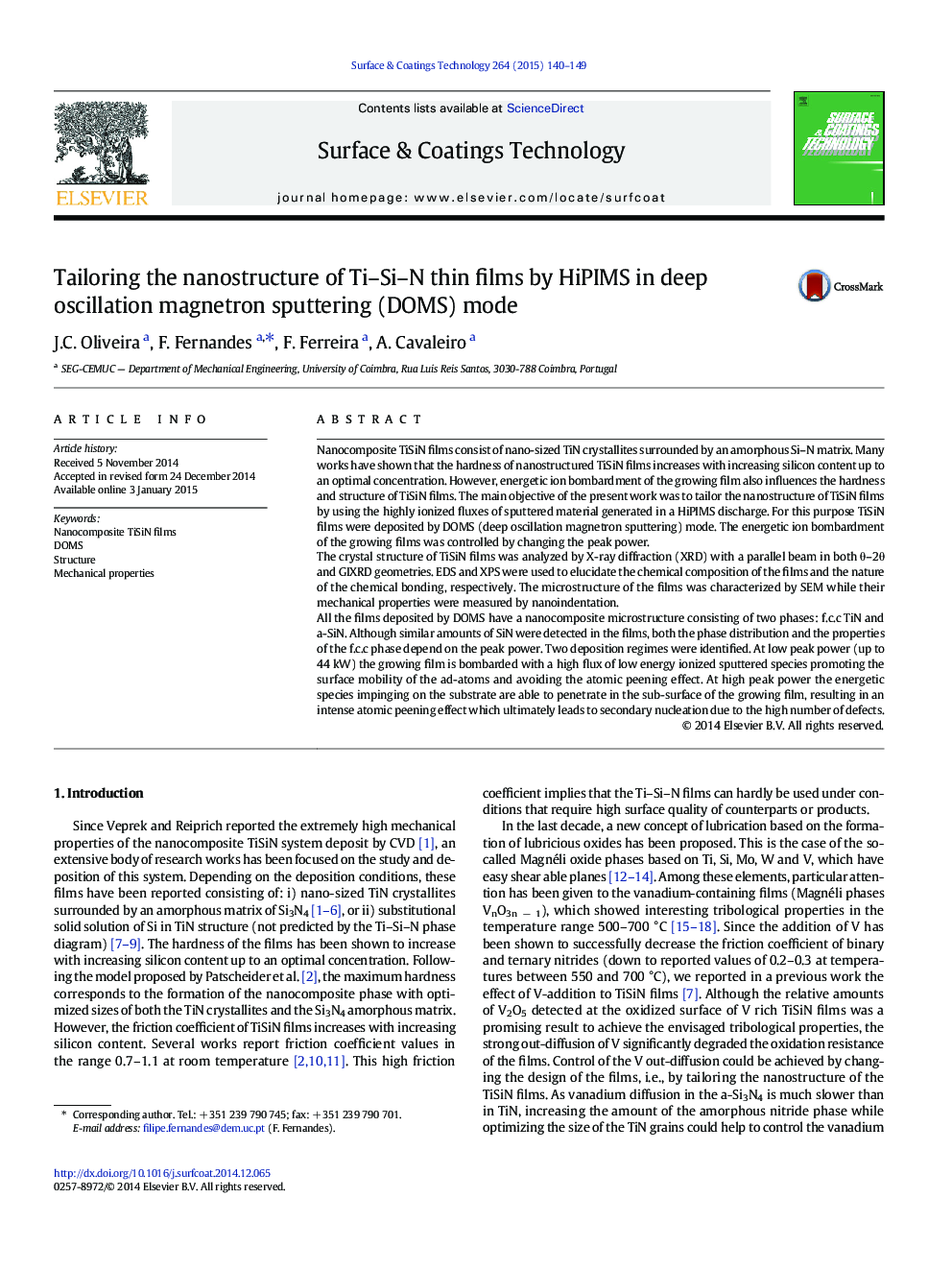| کد مقاله | کد نشریه | سال انتشار | مقاله انگلیسی | نسخه تمام متن |
|---|---|---|---|---|
| 1657268 | 1517615 | 2015 | 10 صفحه PDF | دانلود رایگان |

• TiSiN coatings were deposited by DOMS for the first time.
• Increasing the peak power allows us to tailor the microstructure of the TiSiN films.
• Two deposition regimes were identified (at low and high peak power).
• Dense hard coatings were deposited at high pressure (0.9 Pa).
Nanocomposite TiSiN films consist of nano-sized TiN crystallites surrounded by an amorphous Si–N matrix. Many works have shown that the hardness of nanostructured TiSiN films increases with increasing silicon content up to an optimal concentration. However, energetic ion bombardment of the growing film also influences the hardness and structure of TiSiN films. The main objective of the present work was to tailor the nanostructure of TiSiN films by using the highly ionized fluxes of sputtered material generated in a HiPIMS discharge. For this purpose TiSiN films were deposited by DOMS (deep oscillation magnetron sputtering) mode. The energetic ion bombardment of the growing films was controlled by changing the peak power.The crystal structure of TiSiN films was analyzed by X-ray diffraction (XRD) with a parallel beam in both θ–2θ and GIXRD geometries. EDS and XPS were used to elucidate the chemical composition of the films and the nature of the chemical bonding, respectively. The microstructure of the films was characterized by SEM while their mechanical properties were measured by nanoindentation.All the films deposited by DOMS have a nanocomposite microstructure consisting of two phases: f.c.c TiN and a-SiN. Although similar amounts of SiN were detected in the films, both the phase distribution and the properties of the f.c.c phase depend on the peak power. Two deposition regimes were identified. At low peak power (up to 44 kW) the growing film is bombarded with a high flux of low energy ionized sputtered species promoting the surface mobility of the ad-atoms and avoiding the atomic peening effect. At high peak power the energetic species impinging on the substrate are able to penetrate in the sub-surface of the growing film, resulting in an intense atomic peening effect which ultimately leads to secondary nucleation due to the high number of defects.
Figure optionsDownload high-quality image (194 K)Download as PowerPoint slide
Journal: Surface and Coatings Technology - Volume 264, 25 February 2015, Pages 140–149